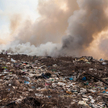Every year in Europe, the mining and energy sectors produce around 700 million tonnes of mineral waste. Out of the almost 150 million tonnes over 100 million tonnes of coal combustion by-products in the power industry are produced in 28 countries of the European Union, of which over 24 million tonnes in Poland in the form of ashes and synthetic gypsum.
By-products of coal combustion are subject to REACH regulation, so as to enable introducing them on the market as chemical substances subject to this law. They are mainly used as raw materials for the production of cement, binders and concrete as well as aggregates and fillers in the construction industry. Their use is safe for people and the environment.
Rational raw materials management
Meeting European or national technical standards for specific applications is the key technical prerequisite for the use of by-products of coal combustion in construction and agriculture. We are able to process them in order to turn them into construction products.
Protection of natural resources and their rational, efficient management is a direct objective and context of the closed-loop economy. This is why all anthropogenic mineral resources can and should be used in infrastructure construction first, before reaching for natural resources.
At the stage of planning infrastructural projects, the parity of use of products from anthropogenic mineral resources should be envisaged. The Closed-loop Material Circulation Index (MCI) in the construction aggregates sector in Poland in recent years has been at a drastically low level of 0.02, with the EU average of about 0.20. Looking at the statistics regarding the production of mineral waste, the amount of complex resources at landfills and the construction needs, it should ultimately reach even 0.50. Then we will be able to leave resources to future generations, not heaps.





















